Alerts

Most of the time you won’t be simply watching EVO’s web interface to make sure things are going well. You’ll want to set up some way for EVO to contact you if something requires attention. EVO supports using Email and Audio notifications (beeping), as well as providing access via SNMP protocol.
Alerts -
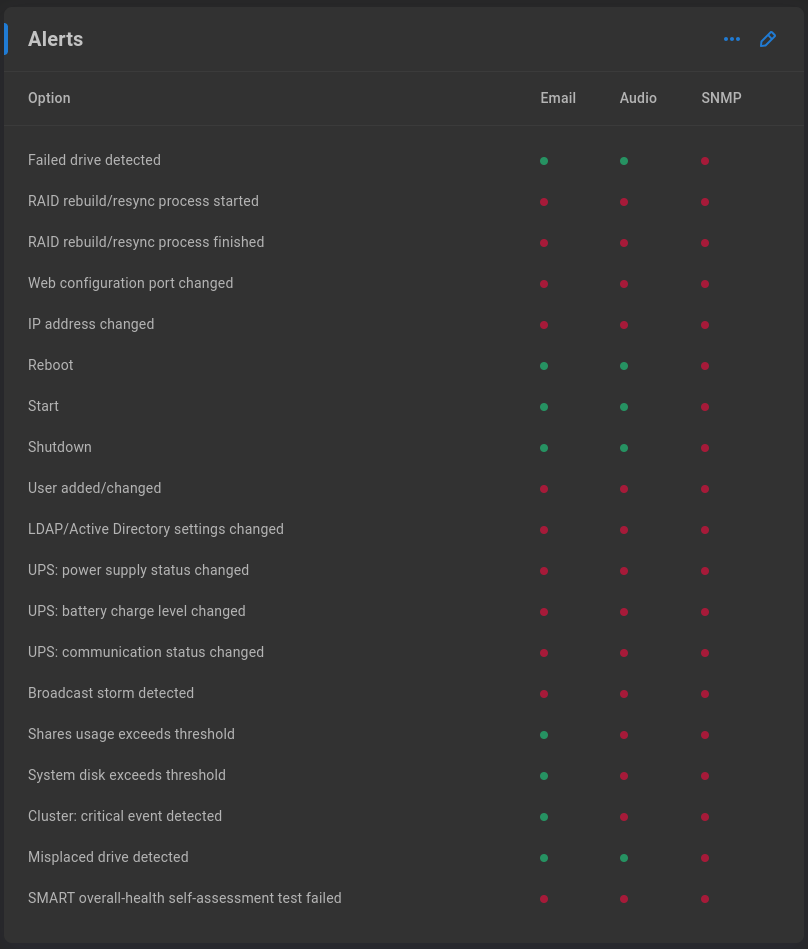
This table displays the available alert types as well as method of delivery (Email, Audio, SNMP). A green light indicates the method will be used for the alert type, while a red light indicates the method will not.
Click the pencil to expose the options and add/remove checks for each alert type/method.
Audio alarm management
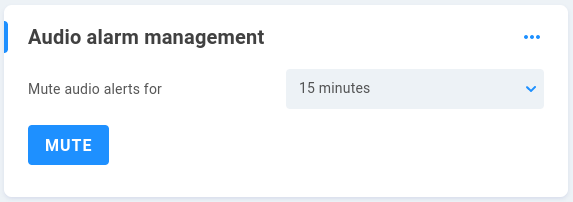
If Audio alerts are enabled for an alert type that occurs, the system will beep. These alerts can be temporarily silenced while the issue is corrected by choosing to mute the audio alerts for a specified amount of time from the drop-down menu.
Settings
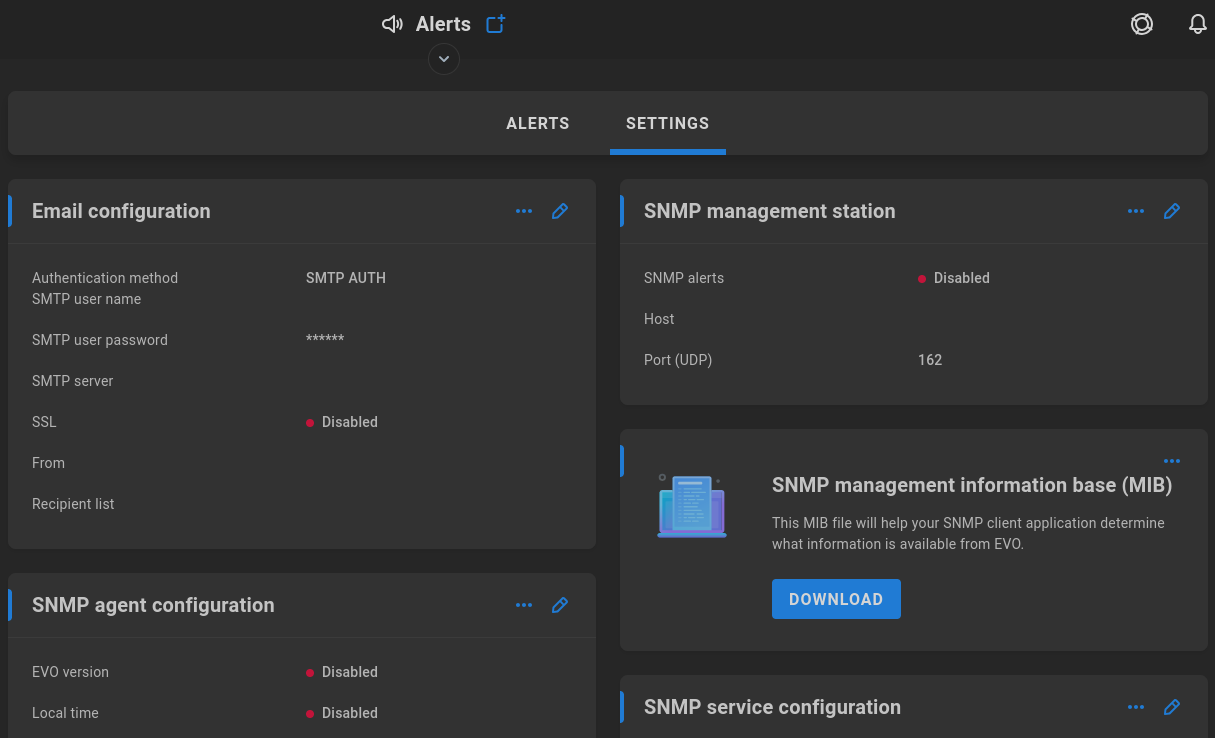
The settings page offers configuration options for alerts
Email configuration

This section may be used to configure EVO to send SMTP (simple mail transfer protocol) notifications for system events. Click the pencil to edit Email configuration options.
SMTP AUTH
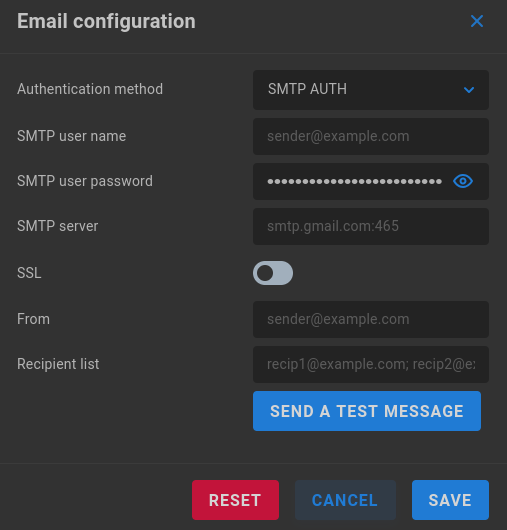
Authentication method - SMTP AUTH
SMTP user name - Enter the valid email address for the SMTP mail account.
SMTP user password - Enter the password for the above account. Note that an application-specific password may be required, for example, if the SMTP server requires two-factor authentication.
SMTP Server - Enter the address and specify the port the SMTP server uses. An example is pre-populated for Gmail, which is smtp.gmail.com:465.
SSL - Most SMTP servers require enabling the Secure Sockets Layer.
From - Enter the address you’d like to be shown as the sender for the SMTP notifications.
Recipient list - Enter the recipient email address(es) for email notifications. Use semicolons to separate addresses if more than one is entered.
Note
If Gmail will be used, a unique password will need to be generated for authentication. See this article for more information: https://support.studionetworksolutions.com/hc/en-us/articles/215191543-SMTP-notifications-with-Gmail
Office365 OAuth2
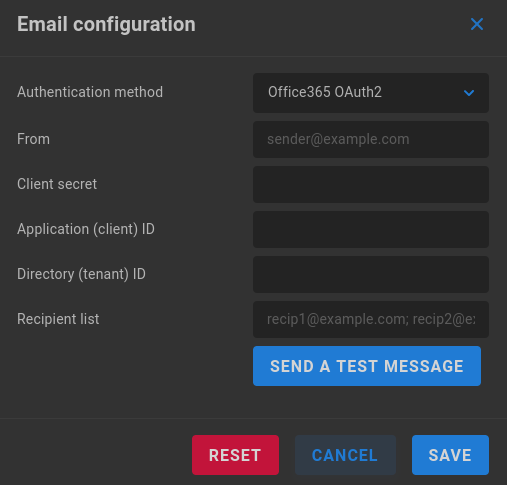
Authentication method - Office365 OAuth2
From - Enter the Azure account login address
Client Secret - Enter the Value (not the Secret ID)
Application (client) ID - Enter the Azure Application ID
Directory (tenant) ID - Enter the Azure Directory (tenant) ID
Recipient list - Enter the recipient email address(es) to use for email notifications. Use semicolons to separate addresses if more than one is entered.
KB article here: https://support.studionetworksolutions.com/hc/en-us/articles/41953711383060-Configuring-SMTP-email-notifications-for-Office-365
SNMP management station
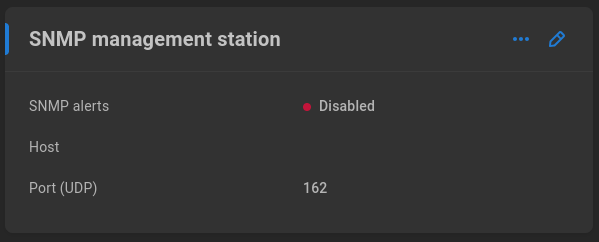
Simple Network Management Protocol (SNMP) is an Internet-standard protocol for managing devices on IP networks. With this feature enabled, statistics can be monitored remotely by an SNMP manager computer sending SNMP requests. Click the pencil to edit the values:
SNMP alerts - Toggles SNMP on/off
Host - Enter the SNMP manager IP address
Port (UDP) - Default port is 162
SNMP agent configuration

This section provides settings specific to SNMP in addition to those available in the Alerts section. The following SNMP agent values are available, disabled by default: EVO version, Local time, System uptime, CPU usage statistics, UPS status, Overall statistics on blocks in/out to internal to EVO drives, I/O statistics for individual EVO disks, NAS sessions, Cached logical disk statistics, Detailed per-logical disk statistics.
SNMP management information base (MIB)
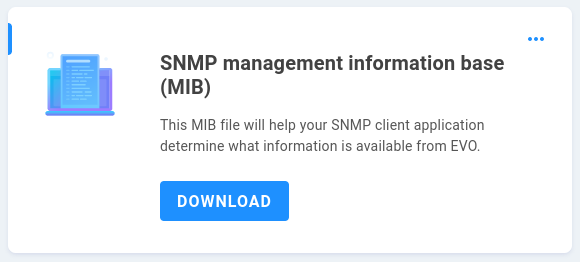
Once Alerts and SNMP agent configuration have been configured, download EVO’s MIB here for use by the SNMP manager system.
SNMP service configuration
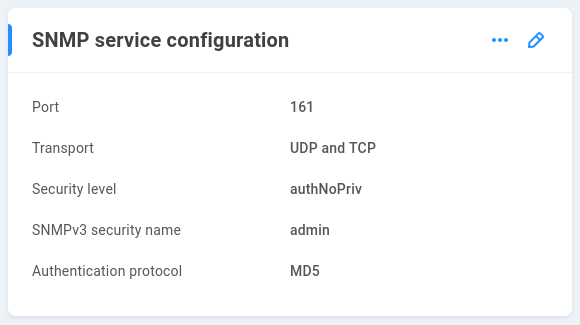
These controls allow for environment-specific SNMP integration. This section assumes you’ve already configured your network monitoring service and have the information available to connect EVO.
Port - default 161
Transport - default UDP and TCP
Security level -
noAuthNoPriv - No authentication, no privacy
authNoPriv - (Default) Authentication, no privacy
authPriv - Authentication and privacy
SNMPv3 security name - admin user for SNMP manager
Authentication protocol - Default is MD5, with various SHA options available
Authentication password - Enter the password for the network manager authentication
